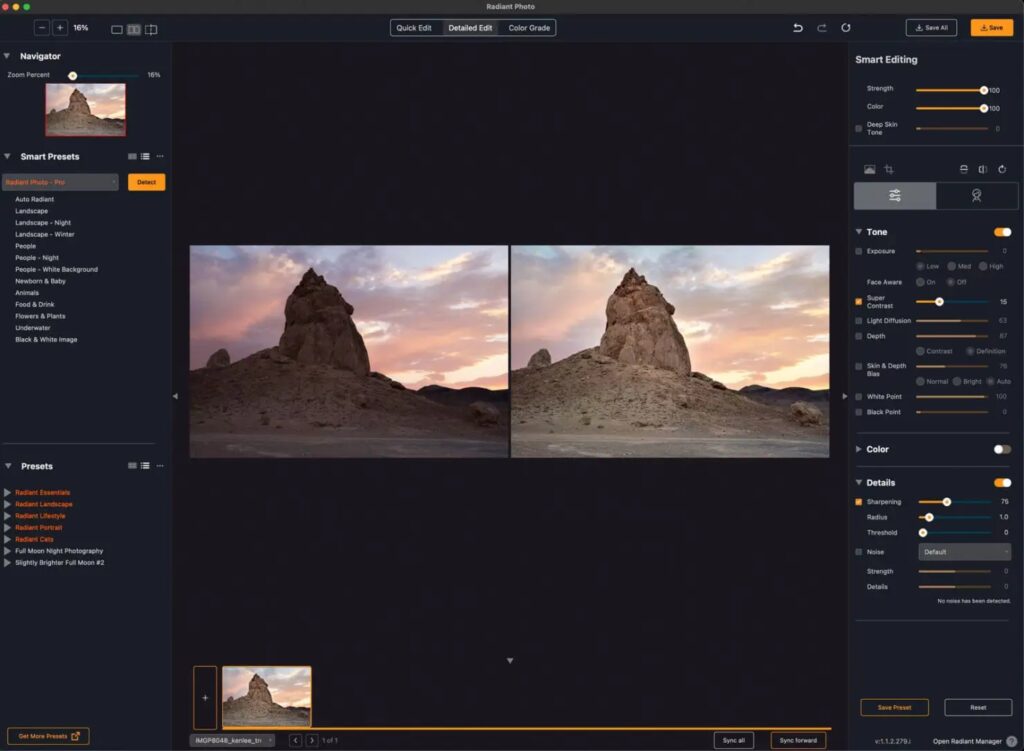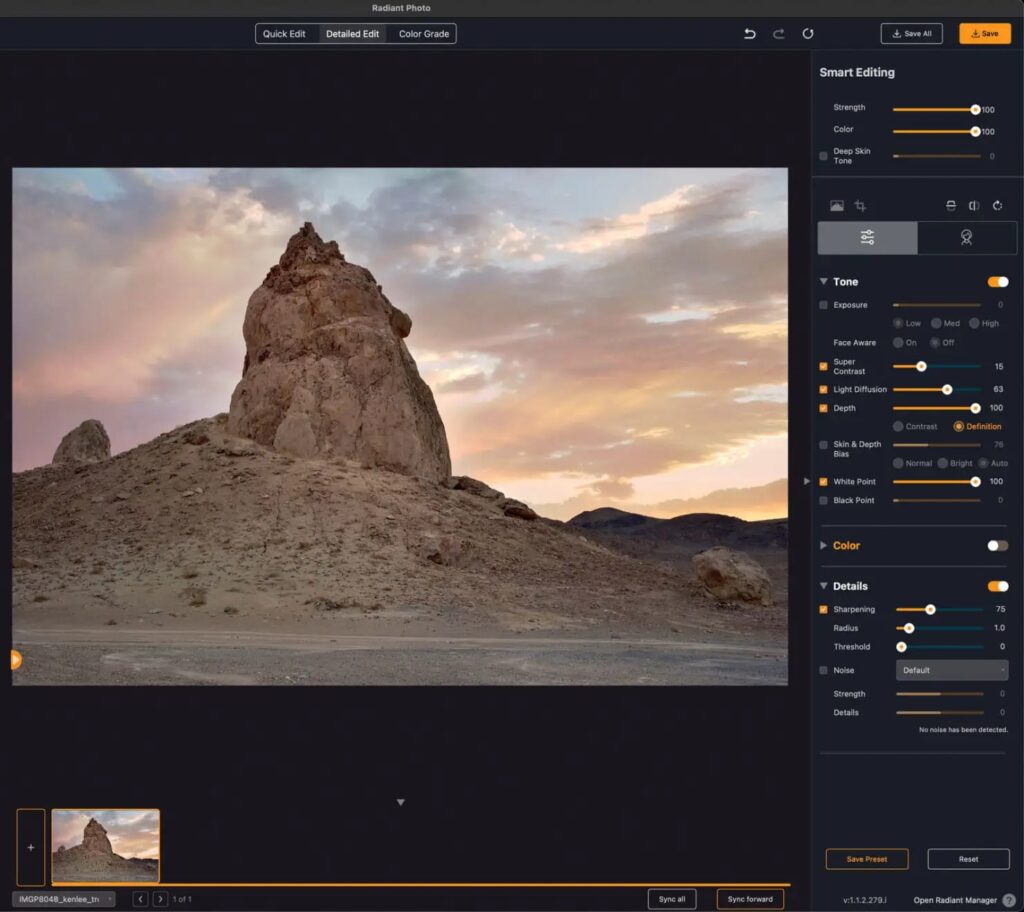Radiant Photo is adept at instantly editing dynamic range, while still allowing for you to fine-tune it according to your tastes and preferences. Let’s have a look.
What Is Radiant Photo? Radiant Photo is an easy-to-use editor designed by photographers for photographers, designed specifically to bring out color, detail, and light in photos without applying presets. When opening an image in Radiant Photo it analyzes each one and suggests edits it thinks will work best with it instead of applying presets – all without using presets!
Dynamic Range in Photos
One of the primary challenges for photographers is capturing scenes with wide dynamic range and making them appear the way we perceive it. Sunsets provide one such dynamic example, often having bright skies yet shadowed landscapes. Radiant Photo provides basic editing tools to address this situation while giving you even more ways to customize your dynamic range according to your personal tastes and needs.

Basic Edit
For my Basic Edit I opened a photo of Trona Pinnacles during sunset into Radiant Photo and can see its original on the left, but Radiant Photo automatically addressed dynamic range and enhanced shadows for a better result.

Light Diffusion
Within the Tone Panel, you can tweak balance further according to your personal tastes if necessary. A basic edit already utilized Super Contrast for contrast enhancement; but further editing of photos is always possible if desired.
Light Diffusion can soften harsh shadows and overly bright areas in an image by softening its light source, similar to how “spreading out” light helps illuminate an image. Softening light through Light Diffusion may also prove particularly helpful when creating portraits.

Depth
can enhance shadow richness. You’ll also notice how it has improved sky depth and clarity of image overall. One interesting aspect is how it allows for “stun mode”, setting 100 as the value without making things look “crunchy” or harsh.

White Point
(or Brightness Control) allows us to fine tune the brightest areas of our image. I have set it to 100 here, much like with Depth Control; what makes this setting unique is how its maximum strength remains natural looking.
Setting these controls to maximum is partly done to demonstrate their unique behavior when compared with many other photo editors – they always attempt to produce something natural-looking rather than harsh looking.

Graduated Filter
Within the Color Grading Menu is another control, the Graduated Filter. This tool allows for targeted adjustments of specific areas within your photo – here, I targeted the sky and reduced highlights slightly.


Finishing Tools: Highlights and Shadows
Like other photo editors, Radiant Photo offers basic final adjustments such as exposure, contrast, highlights, and shadows that allow me to further refine the photo. I adjusted both the Highlight Slider as well as Shadows in order to refine its dynamic range; although doing this takes away some dynamic range it can still prove helpful when refining it further; although with earlier adjustments doing a good job I have removed these from my final photo for good.
Radiant Photo is capable of making many intelligent decisions by itself, but it cannot read your mind. Therefore, it offers many tools for tailoring images to suit individual tastes; most adjustments use sliders that you adjust yourself and that makes it more difficult to alter parameters too far – something we experienced first-hand with Sky adjustments we used.

Before Radiant Photo dynamic range adjustments.

Radiant Photo dynamic range adjustments can be easily made in just seconds using slider controls.
